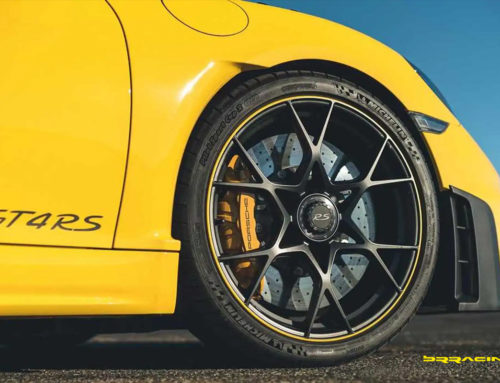Technical Article
As more and more parts become available in composites for cars, we all will need to learn what makes one version any different than another version. Why is one so much cheaper than another? Why does one discolor over time? Why is one so much heavier than another?
Here are some insights into the making of carbon fiber parts –
First of all, not all carbon fiber products are EQUAL. Please read this and consider all the facts before buying any carbon fiber parts. It does not matter if you buy the leading suppliers or any other company. We want YOU to know how to buy carbon fiber products and get your money’s worth.
Why do we care? – Part of our role at BRR is to be a consultative assistant to our customers. We care because too many consumers are unaware about BAD carbon fiber products. There are established manufacturers and Ebay sellers who are promoting inferior carbon fiber products. Too many consumers make the wrong decision before purchasing a product. Most manufacturers will not give you any of this information because a sale is a sale and they do not care about the consumer. We are trying to help our customers understand the carbon fiber industry by telling some of the differences that the other manufacturers do not want you to necessarily know!
ABOUT FORMULA ONE RACING CARBON FIBER PARTS
The best carbon fiber parts are made for Formula One racing. You will never be able to buy these parts nor would you want to ever buy these parts because:
- They are ridiculously expensive.
- The high quality is unnecessary for street/street performance/track/racing use.
- They use tools most manufacturers….at least the aftermarket suppliers, don’t have access or use of. Some, like the BMW Performance and Audi R8 parts are indeed made this way, and you can immediately see and feel the difference. The difference in weight, strength, color, longevity, and PRICE are immediately obvious.
Here is one of the Insights!
Carbon fiber products are composed of two materials: resin and fabric. Good carbon fiber products should only be made with EPOXY RESIN and pure CARBON FIBER FABRIC.
THE IMPORTANCE OF EPOXY RESIN
Before you buy, ask the manufacturer/supplier: “What kind of resin does your company use for carbon fiber and its derivatives?”
The wrong answer is POLYESTER RESIN
Polyester resin is the cheapest product that any company can buy when working with carbon fiber or its derivatives.
- Polyester resin has a blueish finish instead of a clear finish. The blue tint significantly reduces the appearance of the product.
- Polyester resin is inflexible and will spider-crack at the mere thought of bending. Spider cracks fracture from the point of damage and are very difficult to fix.
- Excessive amounts of polyester resin need to be used during the molding process. This adds considerable weight to the product and defeats the purpose of purchasing lightweight carbon fiber.
- Polyester resin will shrink over time and alter the shape of the final product, resulting in installation headaches and additional modifications for fit.
- Polyester resin is not UV resistant and will turn yellow over time.
The correct answer is EPOXY RESIN
Epoxy resin is the industry standard for high-performance race products.
- Epoxy resin is extremely flexible. The flexibility allows a carbon fiber product to absorb a high level of impact force without breaking.
- Epoxy resin does not spider-crack. When epoxy reaches its maximum bending potential (MBP), it will form only a single crack at the stress point.
- Epoxy resin has a transparent finish that allows the deep, black 3D appearance of the carbon fiber to show through.
- Epoxy resin does not shrink.
- Epoxy is 100% UV resistant.
Most manufacturers do not use epoxy resin because they are more interested in driving costs out of the manufacturing process rather than delivering light, flexible and durable carbon fiber. Epoxy resin costs about 3x (three times) more than polyester resin. Epoxy resin (which is a liquid-like material) is more difficult to work with than polyester resin (which is a thicker viscous material). Epoxy resin is also toxic in its natural liquid form and requires high-grade ventilation systems to work with it safely. Yet these manufacturers who use polyester resin charge the same prices as carbon fiber products made with epoxy resin!
THE IMPORTANCE OF USING ONLY CARBON FIBER FABRIC
Carbon fibers are classified by the tensile modulus of the fiber. Tensile modulus is a measure of how much pulling force a certain diameter fiber can exert without breaking. The English unit of measurement is pounds of force per square inch of cross-sectional area, or psi. Carbon fibers classified as “low modulus” have a tensile modulus below 34.8 million psi (240 million kPa). Other classifications, in ascending order of tensile modulus, include “standard modulus,” “intermediate modulus,” “high modulus,” and “ultrahigh modulus.” Ultrahigh modulus carbon fibers have a tensile modulus of 72.5-145.0 million psi (500 million-1.0 billion kPa). As a comparison, steel has a tensile modulus of about 29 million psi (200 million kPa). Thus, the strongest carbon fiber is about five times stronger than steel.
The term graphite fiber refers to certain ultrahigh modulus fibers made from petroleum pitch. These fibers have an internal structure that closely approximates the three-dimensional crystal alignment that is characteristic of a pure form of carbon known as graphite.
Plastics are drown into long strands or fibers and then heated to a very high temperature without allowing it to come in contact with oxygen. Without oxygen, the fiber cannot burn. Instead, the high temperature causes the atoms in the fiber to vibrate violently until most of the non-carbon atoms are expelled.
Next….before you buy, ask the supplier/manufacturer: “How many layers of carbon fiber does your company use on the product? Is it made only with carbon fiber, or does it also utilize some fiberglass? Is there any other reinforcement product used in the construction of the part?”
Most companies claim that they manufacture carbon fiber products, however, this is only half the truth. 95% of companies use only ONE LAYER OF CARBON FIBER and TWO-THREE LAYERS OF FIBERGLASS. They spray paint the inside black so you cannot see the clear white fiberglass. Consumers are paying premium prices associated with pure carbon fiber products but are receiving products made with fiberglass.
High-end companies will use two to three layers of carbon fiber. Sometimes a silk glass product is used to seal the edges and overlapping carbon fiber is used to prevent splinters and smooth transitions in layers. This silk glass product is called Avio-fiber, it is extremely expensive but results in a lightweight, superior product.
RESIN AND FABRIC IS IMPORTANT FOR MOLDS TOO!
Resin and fabric is also important in the creation of the molds that are used for the manufacturing process! In order to create a carbon fiber part, a mold needs to be created. This mold provides the shape of the part. The mold is the first and most expensive part of the manufacturing process. To save money, bad manufacturers will make their molds from polyester resin and fiberglass. The polyester resin will shrink over time and will cause the mold to become deformed. Fiberglass is not durable so the mold will eventually twist and crack. These manufacturers will try to repair the mold and continue to manufacture defective carbon fiber parts that will require substantial modification to install.
High quality molds are made with epoxy resin and carbon fiber, just like the final product.
Another element – Manufacturing and Curing
In the aftermarket arena, this is what really sets parts apart, and what rarely gets disclosed by the manufacturer. This is both part of their trade secret they will say, but this is also the real key to how well the part is made.
There are several ways to manufacture CF parts. Wet lay up, wet lay up with a mold and pressure, dry, pre-impregnated CF, and dry CF with an autoclave. Each approach as noted, increases the strength and lightness, but also the cost. Wet lay is done just like fiberglass. You lay down the mold, fill with fabric, apply the resin in wet / liquid form, and try to remove excess resin, and then let dry. Next, is some of the same, but in an effort to try to reduce the amount of resin (lower the cost, and also lower the weight), you can place the wet lay up in a mold, and then vacuum bag the whole piece. Same type of approach, but with wet lay up, but using a 2 part mold, a female and male portion, and then the molds are pressed together, clamped, and force exerted to drive out the excess resins. The real jump comes from those parts where heat and pressure can be applied together. To further refine the resin process, the actual carbon fiber strands are “pre-impregnated” or coated with the proper type of resin. The pre-preg fabric is then laid inside the mold (male and female, clamped together), and then exposed to high heat. The heat “melts” the pre-preg resin, causing it to flow to the lateral layers, and the perfect level of resin is utilized. However, while some heat is used, this is not the curing process. This is to allow multiple layers to be applied. Once the final number of layers have been achieved, then the final curing is performed, usually in an autoclave, where pressure can be increased as heat is increased as well. The result is the amazingly strong, light weight parts….





Leave A Comment
You must be logged in to post a comment.